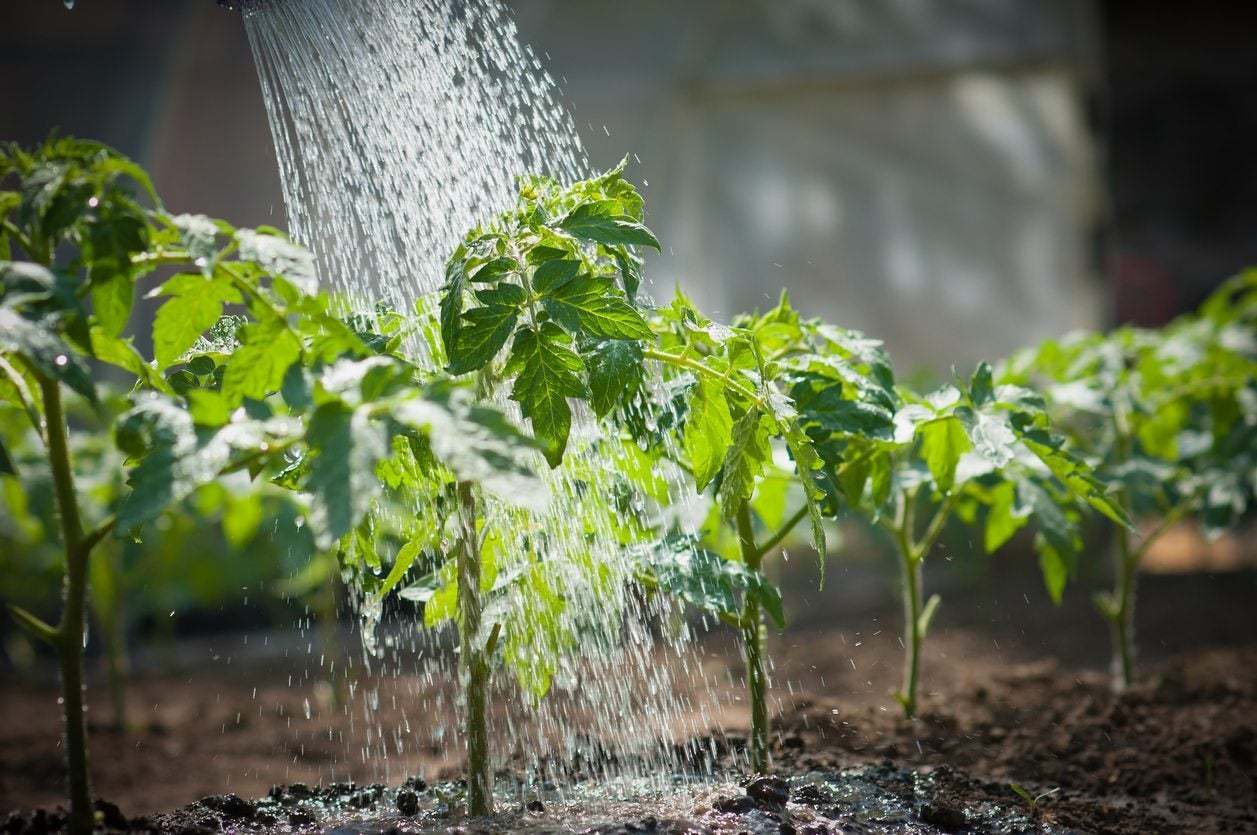Heat Wave Watering Guide – How Much To Water During Heat Waves


It’s hot enough out there to fry an egg on the sidewalk, can you imagine what it’s doing to your plant’s roots? It’s time to step up your watering efforts – but just how much should you increase your watering? Learn about heat wave watering and tips for keeping plants safe during high temperatures in this article.
Watering During Extreme Heat
When the mercury rises, it might seem like the best thing to do is to pour yourself a nice cold glass of tea, prop your feet up, and soak in the air conditioning, but there’s something you’re forgetting. Your plants! When it’s hot for you, it’s hot for them too!
Watering in a heat wave is one of the most important things you can do to save heat-stressed plants and help your lawn survive the summer.
Just how much to water during heat waves is really the question, isn’t it? There’s no simple answer to heat wave watering. The water needs in heat waves vary wildly from plant to plant and even from place to place, based on both the air temperature and the soil type that’s in your garden. If your plants are potted, that’s another wrench in the works. Luckily, plants give us some signs that they really need a drink right now.
For example, if you check your plant in the morning and it’s doing just fine, but by mid-afternoon it’s droopy or discolored, you need to water that plant. If your vegetable garden that was growing furiously suddenly grinds to a halt, you need to water that garden. If your baskets are drying out completely between waterings because of the heat, you need to water those baskets.
It doesn’t matter if you hand water or use tools like soaker hoses and irrigation systems to get the job done, you simply need to be consistent.
It may take a few tries to figure out just how much water to apply, but here’s a good way to figure out just how much water is necessary. Water your plants in the way you think they need to be watered, then go back out about a half hour later and dig a hole about 8 inches (20 cm.) deep nearby.
Gardening tips, videos, info and more delivered right to your inbox!
Sign up for the Gardening Know How newsletter today and receive a free copy of our e-book "How to Grow Delicious Tomatoes".
If the soil’s moist, but not wet, all the way through, you nailed it. If it’s dry, you need to water more. If it’s really wet, water less, but also do something to improve your drainage for the future health of your plants.
Additional Heat Wave Tips for Keeping Plants Cool
Of course, watering isn’t all you can do to keep your plants cool when it’s hot outside. Here are a few other tips:
Mulch heavily. Sure, mulch is great to protect from winter’s cold, but it’s also amazing for protecting from summer’s heat. Mulch is pretty much good for everything. Apply 2 to 4 inches (5-10 cm.) of mulch around your landscape plants, being sure that the mulch doesn’t touch the plants themselves. Now when you water, more will stay in the ground where it belongs.
Move potted plants. Many houseplants spend their summers on the patio, but sometimes those patios can get pretty hot. If you don’t have a spot in less direct sunlight, try installing a solar sail or other shade to block some of the intense solar radiation that’s drying your containers out during the day.
Keep a watering log. It can help to track how much you’re watering and for how long so you can see how your plants respond. You may find that your Musa zebrina, for example, prefers for you to water it directly with a garden hose daily for five minutes during 100 degree F. (38 C.) heat in the morning, rather than being chintzy and only giving it two minutes worth of watery goodness in the afternoon.

Kristi Waterworth was a regular contributor to Gardening Know How for many years, answering countless queries on plant pests and diseases.